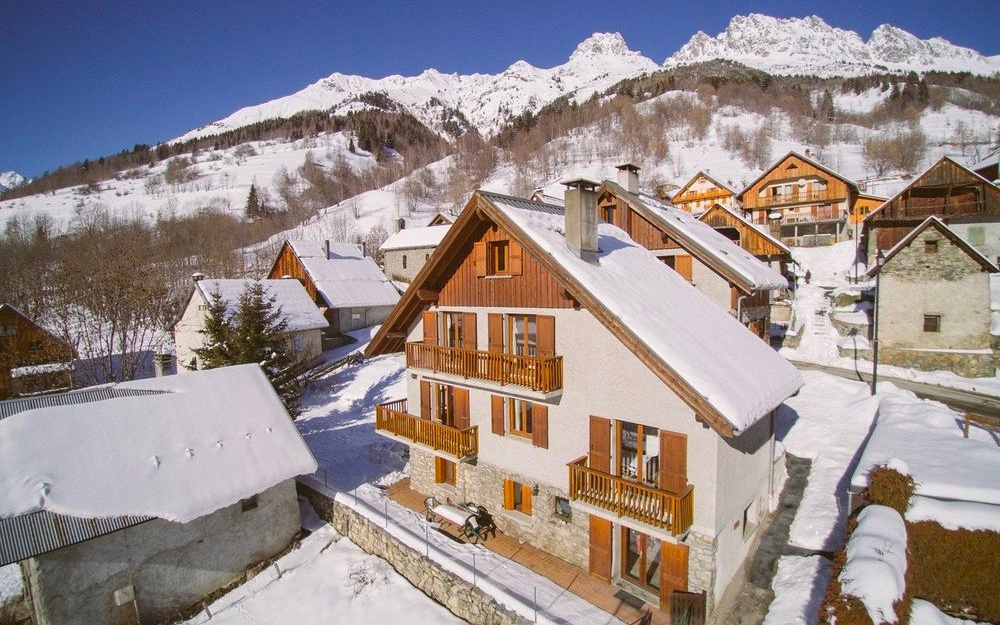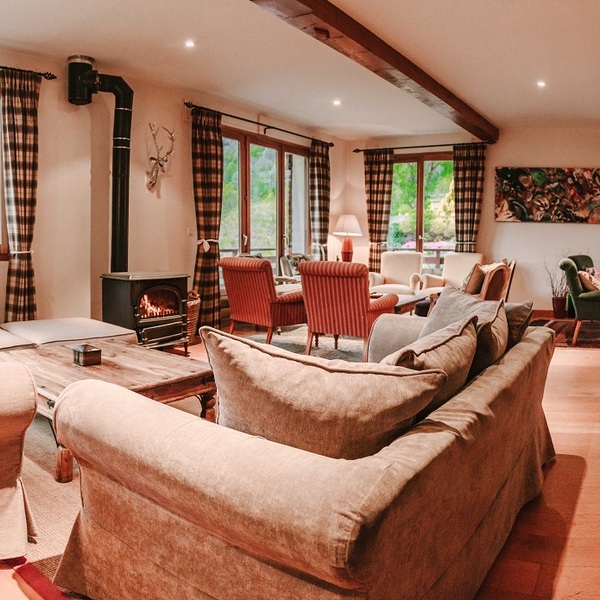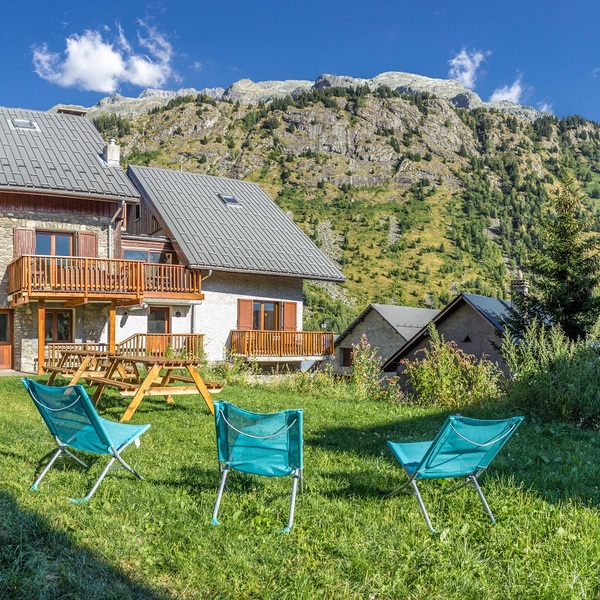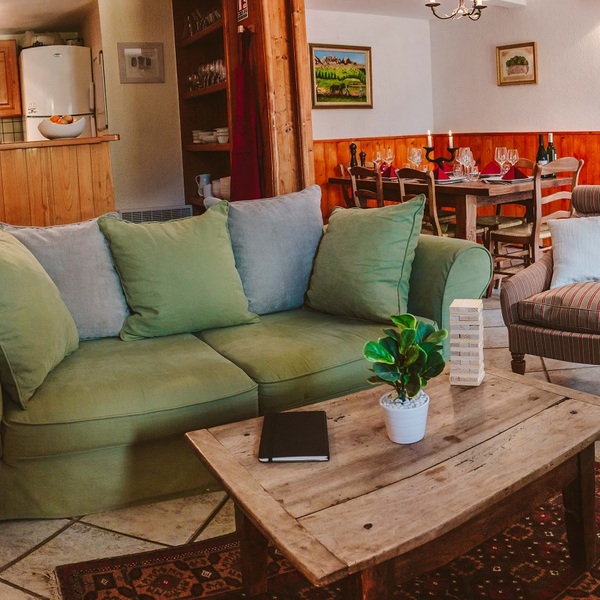When it’s time for an upgrade, choosing the perfect bike can get confusing for some of you. But that doesn’t mean you pick the first bike you find, especially when it’s your first bike. Looking for professional bikes with a solid design and additional features is never easy. That requires accurate knowledge and understanding about what type of bike do you want to ride.
Only when you know what you want to ride your new bike for can you determine your perfect match. You might want a bike for training, touring, commuting, or for day rides around town. Some people require more rugged bikes to handle difficult terrain and the bumps, dirt, roots, and grass that comes with it.
With that out of the way, it’s no surprise that there are many factors to look forward to before choosing a bike.
1. Do You Need A New Or A Used Bike?
Every once in awhile, when you think about buying a vehicle, the thought about buying a used one at a lower price seems tempting. Correct me if I’m wrong, but buying a used bike is an excellent way to budget, especially when you want to a rugged bike for adventure riding.
When wanting to buy a used bike, you must have a lot of questions wavering in your mind. How many kilometers has the bike been ridden? How many times has it been repaired? Is regular servicing of the bike required? And such. To avoid a heated conversation between you and the seller, here’s what you need to know.
Learning about the drivetrain of the bike is critical. It’s the system that’s responsible for moving the bike forward without compromising on balance and speed. The drivetrain consists of the cranks, chain, rear cogs, front cogs, derailleurs, and the shifters. However old the bike’s condition is, the drivetrain should be able to shift gears without resistance. (6)
As a beginner, knowing how soon certain parts of the drivetrain need to replaced is a good way to figure out how much money you’d be spending. If it’s anywhere close to buying a brand-new bike, then buying a used bike and going through the extra hard-work is of no value.
On the other hand, it’s no problem when there’s minimal wear and tear to the cranks, chain rings, and cassette. According to a review, if one part of the drivetrain is damaged and needs to be replaced, then the other parts follow the same fate. So close inspection of each and every component is essential.
Followed by the drivetrain, you should inspect the brake system, wheels, and suspension. If all that’s checked and done and still the bike produces a sort of squeaking noise, check to see if the bearings at the front brake are stable. As different bike noises indicate different potential defects, it’s always useful to be aware of even minor bike glitches.
2. Finding The Right Size
When you end up with the wrong bike size, you’ll always feel uncomfortable and slow to adapt. Not to mention, it might cause neck pain, back pain, and other stress injuries. Other readers have also reported loss of balance, slow riding speed, and frequent falls. (8)
A correct bike frame size can prevent foot problems and stiffness. For that reason, you must take each bike component into consideration before deciding one the final one. These components include:
- Correct frame size
- Saddle
- Pedal position
- Handlebar height
The first step is to take your body measurements, starting with the inseam measurement. You want your legs to be fully extended with a little bend in the knees for a comfortable riding position. So measuring the saddle height and pedal is important to create a downward stroke without hurting your foot or knees.
The next thing to do is working on the seat angle adjustment. Most mountain and hybrid bike riders want their seats parallel to the ground for better posture and an upright back position. Having your seat’s fore/aft position prevents knee cap, shoulder, and neck pain.
Many bikes feature adjustable handlebar heights, but with fixed design bikes you need to determine your right fit. To be honest, I found that fixed-handlebar bikes are far sturdier than adjustable ones. But if you have more than one person riding the bike, the latter would definitely work.
The handlebar should be at the same height as your seat. This develops a good riding position without causing an abnormal back bend when leaning forward. This measurement holds true for professional cyclists during racing or adventure trips. But for casual riders, the handlebar must reach slightly higher than the seat. This depends on the type of bike you get. (9)
There are many frame sizing charts you can look up to after you’ve determined your ideal bike size. And if you want something to help you calculate the bike frame size, you’ll find such tools online too.
In simple words, once you decide what type of bike you’re most comfortable with, determining the fit is easy to do. Every part of the bike starting from the seat and handlebar to the pedal matters. Simply standing over the bike and taking rough measurements is not enough.
3. Determining The Right Brake System
Riders with bikes with slow-working brakes are prone to accidents and serious injuries. You need your brakes to remain precise and efficient, all the time, to avoid such pitfalls. Fortunately, for most bikes out there, there are many different types of brakes that are gaining popularity among professional cyclists and beginners:
Disc brakes: Disc brakes are perfect for all-weather conditions. In these brakes you’ll find variety of kinds such as cable disc brakes and hydraulic disc brakes. The former is less complicated to maintain than the latter. Most bikes feature cable disc brakes as the gear offers packs a powerful punch. The hydraulic disc brakes, on the other hand, are more accurate to control. But they do require a bit of upkeep than cable disc brakes.
Some basic information about disc brakes such as its strong stopping power and incomparable system make it one of the best braking systems for mountain, road, and hybrid bikes.
Rim brakes: Rim brakes are next to disc brakes for being the most efficient braking system. They require very little maintenance, dry weather, and are easy to replace. Although they might not be as good as disc brakes during different weather conditions. Rim brakes are directly attached to the brake with the help of hand levers and cable. So when you pull on each handle, the cable moves slightly to apply pressure and slow down.
Rim brakes are less complex and easier to handle. That being said, they do lack durability for mountain bikes. (12)
Drum brakes: Rugged and sealed, drum brakes are low-maintenance beasts. Because of the integrated and enclosed wheel rear hub, they are 100% dust, water, moisture, and all sorts of weather resistant. The durability makes them heavy-duty than rim and disc brakes.
The upside to these brakes is that they’re perfect for daily use. But they lack the stopping power for mountain bikes (by the way, if you're curious about some of the history of mountain biking, check out this article), especially on dirt trails. The best match for these are commuter and hybrid bikes.
Coaster brakes: If you’re looking for basic brake function, specifically the kind you find in children’s bikes, coaster brakes are it. They pedal backwards to slow down the bike. Plus, you use them without the involvement of cables, levers, or rear gears. If you are looking for a kids bike, coaster brakes offer plenty without the need of hand strength or stamina.
The only downside to using coaster brakes is that you have certain grounds to stay away from. For example, according to one report, coaster brakes don’t work well with downhill slopes.
Fixed-gear brakes: I saved this for last because it’s not the most common brake system you’ll find. It’s rare to see bikes with fixed-gear brakes since these don’t coast and neither do they offer a strong stopping power. To be fair, a fixed gear bike comes with little maintenance. You will notice the pedal moving forward with the bike.
If you’re a casual rider, you should assemble cable disc brakes for better control, at least on the front wheel.
And that’s it! Taking specific brake systems as an important factor of consideration depends on the type of riding and bike you ultimately choose. And by roughly looking at the bike’s braking system you won’t be able to differentiate between a coaster or a fixed-gear bike. (13)
4. Choosing The Right Gearing For A Bike
You will find a wide variety of gears in standard road and hybrid bikes. Some bikes offer single-gear performance, while some offer 30 gears or maybe more. Building upon the chain-rings, cogs, cranks, and the number of teeth on the cogs, the bike’s gearing system can get more accurate and complex.
When considering the right gearing system for your bike, there are two important factors to make sure of. A bike with lots of gears is more efficient at maintaining a comfortable riding speed unless you’re a strong cyclist. So the number of gears you get or have depend upon how strong you are and what kind of terrain you’ll be riding on.
If you are going to ride your bike on hills and bumpy terrain, you need as many gears as you can get. For flat surfaces or pavements, opting for low gears isn’t a bad option. It makes the bike lightweight and easier to handle. You don’t have to ride a bike with too many gears if you’re a strong cyclist to begin with.
Using single gear bikes is a good way to drop some extra weight and punch down maintenance. Professional cyclists who take part in races often ride single-speed bikes as they’re more popular. This offers effortless shifting and consistent pedaling performance on flat terrain. (14)
Based on what you buy each bike type comes with its own gear enforcement. Here’s a quick look at each of them:
Mountain bikes: As you already know, mountain bikes are good for hardcore climbs and slopes. You will find most mountain bikes with either 9-11 back cogs and one to 3 front chain-rings. The chain-rings help making smooth climbs up hills. However, having a single chain-ring on mountain bikes can offer simple gear shifting on the cassette. It also makes the bike lightweight and painless to voyage.
Road Bikes: Road bikes come with at least 18 gears. But you will find some road bikes with 30 or more gears, all based upon the number of chain-rings and cogs it features. For beginners and intermediates, opting for a road bike with low gears is favored. The thing that makes low gears appealing to most bikers is the consistent cadence, regardless of what terrain you’re riding on.
Hybrid bikes: The kind of gearing system installed on a hybrid bike is very similar to road bikes. You can get lower gears as easily has higher ones. But research suggests that hybrid bikers often opt for lower gears to reduce the extra weight and drag. Most hybrid bikes go out for camps, adventure treks, and touring. This means more camping gear, food, water bottles, and clothing. Hybrid bikes perform best with 3 front chain-rings and a small chain-ring. Add a cassette at the rear with 34 teeth and you’re done for both touring and hill riding.
5. Do You Have The Right Wheel Size?
Knowing what wheel size you will be able to work with will be a major deciding factor on narrowing down your ideal bike. If you’re newcomer to buying bikes, this is the kind of information you’re expected to know for a good purchase. It goes without saying that bikes offer versatile wheel sizes based on your type of riding.
That said, here’s what you need to know about the various wheel sizes most common in the industry. (15)
650c or lower: Children and bikers with a small stature can find solace in riding bikes with 650c or lower size wheels. There are plenty of road and hybrid bikes that work best this wheel size for people who don’t find the right fit easily. If you’re below 5’4” in height, then a 650c wheel size would fit you perfectly.
700c: If you’re looking for a standard size, opt for a road or hybrid bike with 700c wheels. The “c’ stands for clinchers which is measured in diameters. This size is perfect because it fits most bikers and has the right kind of dynamics for flat surfaces.
26-inches: Most mountain bikes come with a 26-inch wheel size. Especially for adult mountain bikes, this wheel size offered the most resistance and comfort. But, as of now, finding a 26-inch wheel size for your mountain bike is next to impossible.
27.5-inches: A 27-5-inch wheel size falls between the 26-inch and 29-inch mark. Just as how a hybrid bike is the best combination of a mountain and road bike, this wheel size is the best bet of a 26- and 29-inch wheel size. These wheels offer consistent speed. It keeps its persistent accelerating power without compromising on balance. Also 27-5-inch wheels are better to handle than 29-inchers and are more durable than 26-inchers.
29-inches: These wheels might feel slow when moving forward, but they gradually catch up to speed for a consistent and smooth ride. They are efficiently balanced to tackle obstacles and roll over hard terrain. Research found that professional bikers prefer 29-inchers because they’re far more durable to last for a long time. You will find that rugged hard-tail rigs do their best with 29-inch wheels.
6. Don’t Forget To Pick The Suspension System
The suspension system adds, whether front or back, offer a smooth ride, regardless of the terrain you’re riding on. But each type has its own pros and cons based on the type of bike you want.
Here’s what you need to know about picking an accurate suspension system along with your bike:
Front suspension: Most hybrid and mountain bikes offer only front suspension. It’s a more durable alternative for effortless and smooth rides. So if you’re riding down rugged terrain or cruising on a flat surface, having a front suspension can maintain consistent speed and cadence. Another one of its great advantages is that they require minimal maintenance and are affordable than say full suspension (front and back).
So if you’re your mountain bike to be able to handle bumps and potholes along the way, opting for front suspension bikes is essential. (16)
Full suspension: Full suspension is when you have both front and back suspension. This means the bike absorbs shock from both the front and rear end, whether you’re on a dirt trail or pavement. Full suspension bike force does add weight on both the bike and pedaling force, but it offers better comfort when riding on an uneven road.
Full suspension bikes are known to reduce vibration when riding on challenging terrain. This increases pedaling balance and stability when you want it the most. Also, it offers less pedaling force which means less pressure on the leg muscles. (17)
No suspension: The only reason why you won’t need suspension is when you want to subtract excessive weight for other gear. Having full suspension can make accelerated pedaling less efficient and, sometimes, stagnant. Especially when you’re using it for general commuting or touring.
For such a purpose, a lightweight and tractable bike is your best companion. Budget bikes are also becoming very popular among beginners. They typically feature no suspension to remain inexpensive and well-balanced.
People buying bikes with full suspension take a step further to focus on strength rather than complacent steering.
7. Make Sure Your Bike Lasts Long

How can you know the bike’s shelf life when you do not know the strengths and weaknesses of its frame material? Bikes are designed for both competitive and recreational purpose. You can find a bike that’s both lightweight and durable or find one that’s either one.
Such frame materials come with their own pros and cons, so you should be able to differentiate one from the next with the help of this guide:
Aluminum: When you look at a bike, you know it’s made of aluminum. And that’s the case for most bikes out there. The durable frame and inexpensive price tag makes it a popular choice among beginners and professionals. However, aluminum has gone through some upgrades that make it more durable and shock-resistant. (18)
Carbon Fiber: If you didn’t already know, the combination of two or more materials by binding them together with glue can make the final frame heavy-duty and unbreakable. That’s precisely what carbon fiber does. It’s a form of laminate designed for mountain bikes. Brittle, inflexible, and expensive are some of its popular purchase points. (19)
Titanium: Titanium is a more expensive pick with durable features. Bikes that are more heavy-duty and muscular are made up of titanium. Plus, titanium has a good flexing capacity for proper shock absorption and impact resistance.
Steel: If you’re thinking why steel is less popular than aluminum, let me tell you that there are two types of steel to know about.
Carbon steel or high-tensile steel is strong, stiff, and heavy-duty. You won’t find many carbon steel bikes, but mainly cross-country bikes feature such a rigid construction. On the other hand, Chromoly steel is more lightweight and responsive than its brother. It is used on bikes that are lightweight with minimal suspension and gearing system.
Knowing how accurately your bike’s frame material has been butted, tubed, and welded makes a big difference. Based on how strong you are and your budget can you decide the right frame material for your future bike.
8. Which Handlebar Are You Most Comfortable With?
Finding the correct handlebar shape is paramount to comfortable and effortless cycling. With so many different types of bikes available on the market, settling for a handlebar you don’t like is not an option. An incorrectly-shaped handlebar can cause wrist, back, and spinal problems, in the long run. So getting your bike positon right the first time is essential.
Based on what most people find comfortable, here are the different kinds of handlebar and their best features:
Drop bar: Drop bars work great on road bikes. They feel light and offer impressive aerodynamic capabilities. Drop bars are sleeker and more simplified than other handlebars, which makes them the most popular ones on the market. They allow better maneuverability, but they might put some pressure on your back muscles.
Flat bar: Hybrid bikers love using flat bars, but you will find these on very selective mountain and road bikes. There’s no reason why you should not choose the strong, heavy-duty, and structured features of this handlebar. It offers a more responsive position, relieving pressure off of your shoulders, arms, and wrists.
Riser bar: Riser bars are popular among mountain bikers. As the name suggests, they’re higher and closer to the seat than other handlebars. This makes them more comfortable and appropriate to use when you want good steering and bike control.
Mustache bar: This might be the least common of all, but it’s not incapable. You will find a mustache bar on some mountain and road bikes. And they are designed to accommodate versatile hand positions. If you want to maintain your upright position while riding, a mustache bar can help relieve all the strain from your back and shoulder muscles. This can save you from suffering minor injuries and even painful surgeries like laminectomy and Biomet shoulder replacement.
9. Where Would You Ride Your Bike?

Considering how well you can ride and where matters because it determines the type of riding you will be doing for a very long time. If you plan to commute with your bike and need to get on and off of public transport frequently, a folding bike would be your best bet.
There are bikes suitable for pavement riding, rugged trails, dirt roads, and non-paved terrain. And there is the tandem bike designed for riding with someone else to make it more interesting.
Recent research papers have placed emphasis on bike-sharing systems in certain cities for easier bike transportation on roads. A 10% increase in availability of standard and road bikes in cities can boost 12% ridership. This means you have more reasons to buy a professional bike and there’s plenty of resources available to help you maintain one. (1)
Moving forward, if you want to ride your bike on rugged, uneven trails, that means you’re up for a mountain bike. Mounting bike riding involves intense physical activity so handling the terrain for off-road obstacles can get challenging. You will find rocks, puddles, bushes, broken branches, and maybe potholes along your trail. (2)
Knowing the type of riding you will be doing helps you decide on the design, features, and durability of a bike. If you intend to use it occasionally, finding a durable fit is suitable. If you intend to use it every day, finding a high-quality and lightweight bike lasts longer.
Location is important for performance. It helps you pay more attention to detail and you can look at all types of bikes including mountain, road, hybrid, and tandem bikes for better mileage.
10. Picking The Right Bike Type
You have many bikes to choose from. From mountain bikes that handle dirt roads excellently to a cruiser bike meant for casual riders and commuting, and even an electric bike for those who want that extra boost. It’s all a matter of preference and performance, especially for beginners who’ve never bought a bike before. If you want to know more then take a look at Electric Bike Critic
It’s important to remember that not all types of bikes are suitable for general commuting or adventure trails. Buying a specific type of bike lets you make the most of both its design and the money you pay for it. For your benefit, let’s look at the different bike types and their features:
Road bikes: Road bikes are lightweight and excellent for long-distance and speed riding. You can opt for a road bike if you indulge in touring and fitness than dirt trail riding. A road bike usually comes with aerodynamic features that push the bike forward without compromising on speed. They also allow better handle-bar positioning for controlled navigation and balance.
Mountain bikes: Mountain bikes come in versatile versions from hardtail and cross country to freeride riding. These are more rugged and accurate than standard road bikes. Hence, they’re built for off-road riding. You can also use a mountain bike for pavement riding as some of its features off stable and ergonomic control. The brakes, wheels, saddle, and shifting system of a mountain bike ensures strong performance and better resistance on uneven surfaces.
Hybrid bikes: Hybrid bikes for perfect for commuting since they fall somewhere in-between mountain and road bikes. With a hybrid bike you get the best of both worlds as they possess the sturdiness of a mountain bike and the comfort of a road bike. The feature that sets a hybrid bike apart is its taller gearing and frame. The wide range of gears and durable pedals make it easier for commuting to work, school, and other places.
It’s Time For A Test Ride!

Nothing beats the benefits of going for a short test ride before buying a bike. You may have to do a few more before picking your style, but most often than not, a single test ride would suffice. By taking your bike for a spin you have a handle on the bike’s comfort level, durability, and manoeuvrability.
Since there are so many bikes to choose from, jotting down the most intricate feature adds value to the process. So what if you’ve never bought a bike before? Learning the basics of any vehicle is a good practice to avoid making mistakes while buying. Because without knowing how reliable the suspension or brake system is, how can you pedal your way to a good time?
To read more of Jen's reviews please see her site 'Jen Reviews'
Tagged with;














